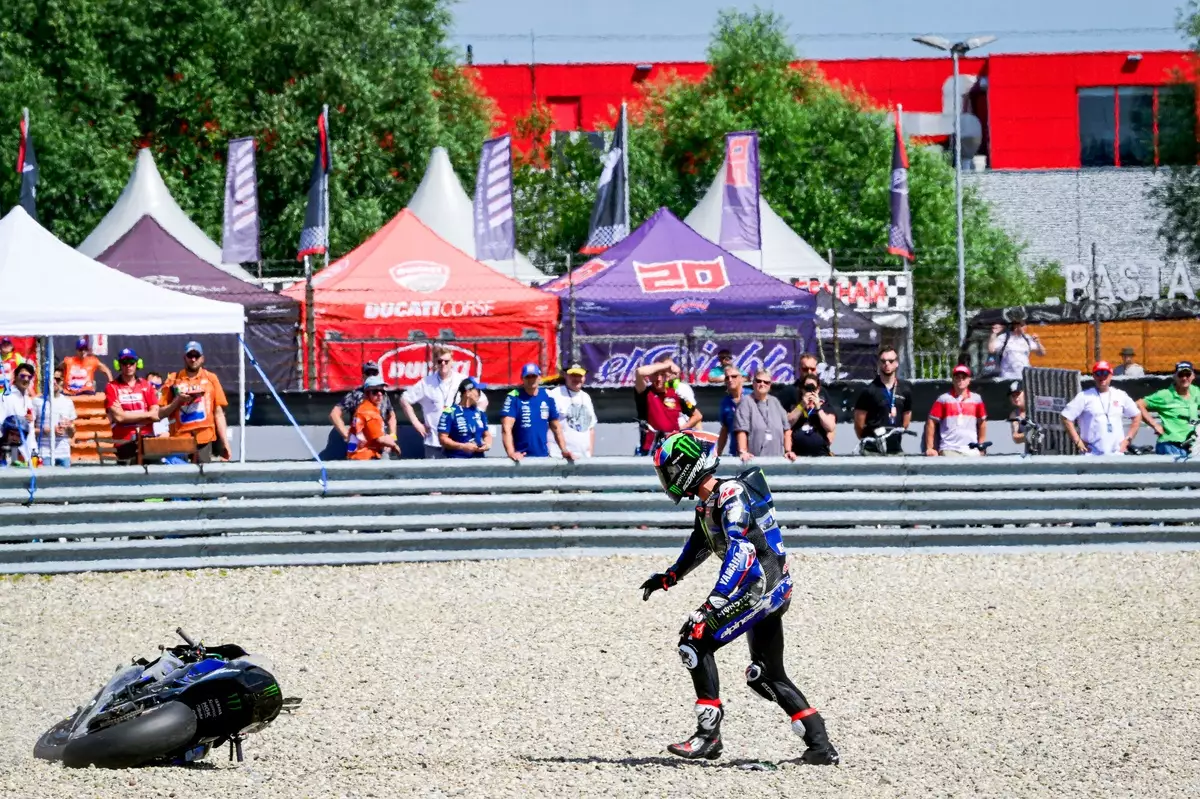The world of MotoGP is fraught with uncertainties, particularly when a rider’s performance history intersects with health challenges. This notion crystallizes in the case of Alex Rins, a talented Spanish rider whose promising trajectory was significantly marred by a horrific leg injury sustained during the 2023 Mugello round. Despite a medley of doubts surrounding Rins‘ ability to return to form, Yamaha appears resolute in its commitment to him, renewing his contract until 2026. This bold decision raises numerous questions, prompting an examination of the factors influencing Yamaha’s interpretation of Rins as a valuable asset.
At the core of the controversy surrounding Rins lies the juxtaposition between his proven talent and the limitations imposed by recurring injuries. Over eight seasons in MotoGP, Rins has illuminated the track with six victories and 18 podium finishes, establishing himself as a fierce competitor. Yet, his recent performances have led many to speculate regarding his viability as a top-tier rider. Since his return to racing post-injury, Rins has struggled to deliver results synonymous with his talent – an outcome exacerbated by further mishaps on the circuit and surgeries that underscore his physical vulnerabilities.
This predicament invites reflection on a pivotal question: why would Yamaha risk a long-term investment in a rider who might be perceived as a liability? While the emotional spectrum of MotoGP tends to trend towards optimism, logic suggests that a premier team like Yamaha would not intentionally complicate its portfolio of riders. Thus, the renewal of Rins‘ contract appears driven by more than mere sentimentality; it could be rooted in an informed belief in his potential to impact the team’s performance positively.
Rins‘ journey to Yamaha is also intertwined with the dynamics of team strategy and the changing landscape of rider contracts. Just months before his signing, the MotoGP paddock was buzzing with the implications of rider movements and potential partnerships. The timing of Rins‘ transition was particularly strategic, as he transitioned from a team—LCR Honda—that had its strengths but was paradoxically limiting post-injury. His success with the Honda platform, particularly his victory at the Americas GP, is a testament to his riding prowess even amidst adversity.
Yamaha’s bet on Rins can be seen as an investment in a rider who possesses critical development skills. As re-evaluated by industry insiders, a rider’s ability to provide feedback and refinement in motorcycle engineering is paramount for a factory team, especially when facing technological stagnation. In this regard, Rins‘ history at Suzuki—where he played a significant role in the evolution of a championship-winning bike—highlights his capacity for bike development.
Rins himself acknowledges the skepticism surrounding his performance as he adjusts to the demands of elite racing. “The reflection is appropriate because I have not yet been able to demonstrate my full potential in a race,” he remarked, indicating a level of self-awareness that few athletes exhibit. His candidness suggests that he understands both the weight of expectation placed upon him and the persisting doubts that might follow him throughout his recovery.
This introspection is critical, especially as he strives to recalibrate his standing amidst an increasingly competitive field. Team-mate Fabio Quartararo’s successes juxtapose Rins‘ struggles and reveal a broader narrative: the pressure to perform at a high level is tangible. Yet, Quartararo has also expressed faith in Rins’ capabilities, suggesting a level of team cohesion that may mitigate some of the burden Rins carries.
Experts within the MotoGP community seem to echo the sentiments of several Yamaha insiders, asserting that Rins possesses the experience and insights needed to propel Yamaha’s bike development forward. The high-risk decision to renew his contract indicates not only faith in his riding capabilities but also acknowledges the potential for growth and improvement within both the motorcycle and Rins himself.
Increasingly, teams are tasked not just with securing immediate results but with safeguarding long-term development trajectories. With Yamaha’s technical team undergoing transformations aimed at revitalizing the performance of the M1, Rins’ nuanced understanding of motorcycle dynamics could prove influential as the factory addresses two major challenges: returning to winning form and solidifying their future in the championship.
As the MotoGP season progresses, the cycling narrative will undoubtedly focus on Alex Rins‘ journey of recovery and his striving efforts to reclaim what was lost. Yamaha’s commitment serves as both a strategic gamble and a testament to their assessment of Rins’ potential—equal parts uncertainty and hope. In a world where every twist on the track holds the potential for glory or disaster, the unfolding saga of Rins illustrates the complex interplay of talent, ambition, and the harsh realities of competitive motorsport. Only time will reveal the efficacy of Yamaha’s gamble, but the stakes are undoubtedly high.


Napsat komentář